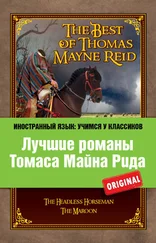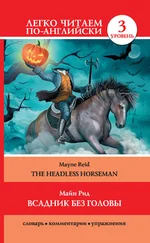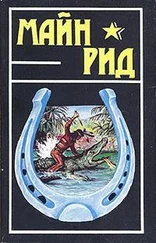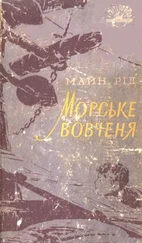The Best of Thomas Mayne Reid
The stag of Texas [1] , reclining in midnight lair, is startled from his slumbers by the hoofstroke of a horse.
He does not forsake his covert, nor yet rise to his feet. His domain is shared by the wild steeds of the savannah [2] , given to nocturnal straying. He only uprears his head; and, with antlers o’ertopping the tall grass, listens for a repetition of the sound.
Again is the hoofstroke heard, but with altered intonation. There is a ring of metal – the clinking of steel against stone.
The sound, significant to the ear of the stag, causes a quick change in his air and attitude. Springing clear of his couch, and bounding a score of yards across the prairie [3] , he pauses to look back upon the disturber of his dreams.
In the clear moonlight of a southern sky, he recognises the most ruthless of his enemies – man. One is approaching upon horseback.
Yielding to instinctive dread, he is about to resume his flight: when something in the appearance of the horseman – some unnatural seeming – holds him transfixed to the spot.
With haunches in quivering contact with the sward, and frontlet faced to the rear, he continues to gaze – his large brown eyes straining upon the intruder in a mingled expression of fear and bewilderment.
What has challenged the stag to such protracted scrutiny?
The horse is perfect in all its parts – a splendid steed, saddled, bridled, and otherwise completely caparisoned. In it there appears nothing amiss – nothing to produce either wonder or alarm. But the man – the rider? Ah! About him there is something to cause both – something weird – something wanting !
By heavens! it is the head!
Even the unreasoning animal can perceive this; and, after gazing a moment with wildered eyes – wondering what abnormal monster thus mocks its cervine intelligence – terror-stricken it continues its retreat; nor again pauses, till it has plunged through the waters of the Leona [4] , and placed the current of the stream between itself and the ghastly intruder.
Heedless of the affrighted deer – either of its presence, or precipitate flight – the Headless Horseman rides on.
He, too, is going in the direction of the river. Unlike the stag, he does not seem pressed for time; but advances in a slow, tranquil pace: so silent as to seem ceremonious.
Apparently absorbed in solemn thought, he gives free rein to his steed: permitting the animal, at intervals, to snatch a mouthful of the herbage growing by the way. Nor does he, by voice or gesture, urge it impatiently onward, when the howl-bark of the prairie-wolf causes it to fling its head on high, and stand snorting in its tracks.
He appears to be under the influence of some all-absorbing emotion, from which no common incident can awake him. There is no speech – not a whisper – to betray its nature. The startled stag, his own horse, the wolf, and the midnight moon, are the sole witnesses of his silent abstraction.
His shoulders shrouded under a serape [5] , one edge of which, flirted up by the wind, displays a portion of his figure: his limbs encased in “water-guards” of jaguar-skin: thus sufficiently sheltered against the dews of the night, or the showers of a tropical sky, he rides on – silent as the stars shining above, unconcerned as the cicada [6] that chirrups in the grass beneath, or the prairie breeze playing with the drapery of his dress.
Something at length appears to rouse from his reverie, and stimulate him to greater speed – his steed, at the same time. The latter, tossing up its head, gives utterance to a joyous neigh; and, with outstretched neck, and spread nostrils, advances in a gait gradually increasing to a canter. The proximity of the river explains the altered pace.
The horse halts not again, till the crystal current is surging against his flanks, and the legs of his rider are submerged knee-deep under the surface.
The animal eagerly assuages its thirst; crosses to the opposite side; and, with vigorous stride, ascends the sloping bank.
Upon the crest occurs a pause: as if the rider tarried till his steed should shake the water from its flanks. There is a rattling of saddle-flaps, and stirrup-leathers, resembling thunder, amidst a cloud of vapour, white as the spray of a cataract.
Out of this self-constituted nimbus [7] , the Headless Horseman emerges; and moves onward, as before.
Apparently pricked by the spur, and guided by the rein, of his rider, the horse no longer strays from the track; but steps briskly forward, as if upon a path already trodden.
A treeless savannah stretches before – selvedged by the sky. Outlined against the azure [8] is seen the imperfect centaurean [9] shape gradually dissolving in the distance, till it becomes lost to view, under the mystic gloaming of the moonlight!
Chapter 1 The Burnt Prairie
On the great plain of Texas, about a hundred miles southward from the old Spanish town of San Antonio de Bejar [10] , the noonday sun is shedding his beams from a sky of cerulean brightness. Under the golden light appears a group of objects, but little in unison with the landscape around them: since they betoken the presence of human beings, in a spot where there is no sign of human habitation.
The objects in question are easily identified – even at a great distance. They are waggons; each covered with its ribbed and rounded tilt of snow-white “Osnaburgh [11] .”
There are ten of them – scarce enough to constitute a “caravan” of traders, nor yet a “government train.” They are more likely the individual property of an emigrant; who has landed upon the coast, and is wending his way to one of the late-formed settlements on the Leona.
Slowly crawling across the savannah, it could scarce be told that they are in motion; but for their relative-position, in long serried line, indicating the order of march.
The dark bodies between each two declare that the teams are attached; and that they are making progress is proved, by the retreating antelope, scared from its noonday siesta , and the long-shanked curlew, rising with a screech from the sward – both bird and beast wondering at the string of strange behemoths , thus invading their wilderness domain.
Elsewhere upon the prairie, no movement may be detected – either of bird or quadruped. It is the time of day when all tropical life becomes torpid, or seeks repose in the shade; man alone, stimulated by the love of gain, or the promptings of ambition, disregarding the laws of nature, and defying the fervour of the sun.
So seems it with the owner of the tilted train; who, despite the relaxing influence of the fierce mid-day heat, keeps moving on.
That he is an emigrant – and not one of the ordinary class – is evidenced in a variety of ways. The ten large waggons of Pittsburgh [12] build, each hauled by eight able-bodied mules; their miscellaneous contents: plenteous provisions, articles of costly furniture, even of luxe , live stock in the shape of coloured women and children; the groups of black and yellow bondsmen, walking alongside, or straggling foot-sore in the rear; the light travelling carriage in the lead, drawn by a span of sleek-coated Kentucky [13] mules, and driven by a black Jehu [14] , sweltering in a suit of livery; all bespeak, not a poor Northern-States settler in search of a new home, but a rich Southerner who has already purchased one, and is on his way to take possession of it.
And this is the exact story of the train. It is the property of a planter who has landed at Indianola [15] , on the Gulf of Matagorda [16] ; and is now travelling overland – en route [17] for his destination.
Читать дальше
Конец ознакомительного отрывка
Купить книгу











